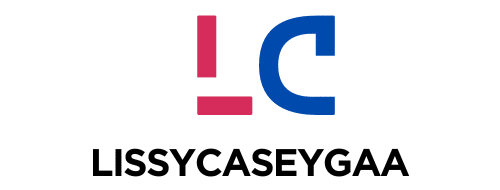In our increasingly inclusive society, it’s crucial to understand the legal obligations of business owners and developers when it comes to making commercial establishments accessible to people with disabilities. This article will delve into the federal laws and guidelines that mandate accessibility in public facilities, especially in relation to the Americans with Disabilities Act (ADA). You’ll also learn about the web accessibility standards that have come to prominence in recent years.
Understanding the ADA
The Americans with Disabilities Act (ADA), signed into law in 1990, was a landmark civil rights legislation for persons with disabilities. It prohibits discrimination on the basis of disability in employment, state and local government, public accommodations, commercial facilities, transportation, and telecommunications.
A découvrir également : What Innovative Water Recycling Systems Can Be Used in Green Buildings?
The ADA sets out specific requirements for making public areas accessible. The Department of Justice (DOJ) is charged with enforcing ADA requirements in all areas except transportation, which falls under the Department of Transportation (DOT).
Accessibility Requirements for Commercial Facilities
Under Title III of the ADA, businesses and non-profit service providers must meet certain accessibility standards. These include both newly constructed facilities and modifications of existing structures. Commercial facilities such as retail stores, restaurants, hotels, movie theaters, private schools, condominiums, and factories must comply with these standards.
A voir aussi : How to Optimize Commercial Real Estate Layouts for Post-Pandemic Health Protocols?
For new constructions and alterations, the DOJ has released the ADA Standards for Accessible Design. These guidelines outline the minimum requirements for accessibility in terms of architecture and design. They cover a wide array of elements, from building entrances and exits, parking lots, restrooms, and elevators, to fitting rooms and check-out areas.
The DOJ also issued rules for "readily achievable barrier removal" in existing facilities. This rule requires business owners to remove physical barriers in their properties where it’s easy to do so without much difficulty or expense. The DOJ has a list of potential barrier removals, such as installing ramps, making curb cuts at sidewalks and entrances, repositioning telephones, and adding raised markings on elevator control buttons.
Federal Accessibility Standards
In addition to the ADA, businesses must also comply with federal accessibility standards. These are set by the Architectural and Transportation Barriers Compliance Board, also known as the Access Board. This federal agency develops and maintains design criteria for the built environment, transit vehicles, telecommunications equipment, medical diagnostic equipment, and information technology.
The Access Board’s guidelines act as the baseline for ADA standards. For instance, they have guidelines known as the ADA Accessibility Guidelines (ADAAG) which provide technical specifications for making facilities and services accessible. They cover elements such as ramps, stairs, elevators, parking, restrooms, and drinking fountains.
Accessibility in Public Services
Title II of the ADA applies to state and local government entities. They have to ensure that all their programs, services, and activities are accessible to people with disabilities. This includes not only physical access to buildings and facilities but also access to the information and services they provide.
Government entities must ensure effective communication with people who have hearing, vision, or speech disabilities. They must provide auxiliary aids and services where necessary to ensure communication. These aids can include sign language interpreters, written materials, Braille materials, and assistive listening devices.
In addition, public entities must make reasonable modifications to policies, practices, and procedures where necessary to avoid discrimination. For instance, a city government may have to adjust its rules to allow a miniature horse into a public building if the animal is a service animal for a person with a disability under ADA rules.
Web Accessibility
In our digital age, ADA accessibility requirements extend beyond physical spaces and into the digital realm. Title III of the ADA has been interpreted by some courts to include websites and mobile apps of businesses. In 2010, the DOJ issued an Advanced Notice of Proposed Rulemaking indicating that it was considering revising the regulations implementing Title III to ensure that the websites of entities covered by Title III are accessible.
The Web Content Accessibility Guidelines (WCAG) have emerged as the accepted standard for website accessibility. Developed by the World Wide Web Consortium (W3C), these guidelines provide criteria for making web content more accessible to people with disabilities. The WCAG is organized around four principles: information and user interface components must be perceivable, operable, understandable, and robust.
While the DOJ hasn’t officially adopted the WCAG, it has referenced these guidelines in settlements and enforcement actions, suggesting that businesses should strive to meet WCAG standards to ensure their websites are accessible.
Navigating the landscape of accessibility requirements may seem daunting, but it’s a worthwhile endeavor. By adhering to these legal obligations and demonstrating a commitment to inclusivity, businesses can attract a broader customer base, enhance their brand reputation, and, most importantly, uphold the rights of all individuals to access public spaces and information.
Accessibility in Housing Developments
Understanding the legal requirements for accessibility in housing developments is essential for developers and property owners. In the U.S., the Fair Housing Act (FHA) and Section 504 of the Rehabilitation Act of 1973 play crucial roles in ensuring that housing is accessible for persons with disabilities.
The FHA prohibits discrimination based on disability in the sale, rental, and financing of dwellings. Under the FHA, newly constructed multifamily dwellings consisting of four or more dwelling units, where first occupancy occurred after March 13, 1991, must meet certain accessibility requirements. These include accessible entrances, wider doors suitable for wheelchair access, accessible routes into and through the dwelling, light switches, electrical outlets, and thermostats at accessible heights, reinforced bathroom walls to allow installation of grab bars, and usable kitchens and bathrooms that an individual using a wheelchair can maneuver.
Section 504, on the other hand, applies to federally assisted housing programs. It stipulates that no individual with a disability should be excluded from participating in, be denied the benefits of, or subjected to discrimination under any program receiving federal financial assistance. This includes ensuring that newly constructed or altered housing units meet certain federal accessibility standards.
Meeting these federal housing accessibility standards creates an inclusive environment for individuals with disabilities, which is not only a legal obligation but also a demonstration of social responsibility.
Accessibility in Work Areas
In the field of employment, Title I of the ADA forbids employers from discriminating against individuals with disabilities. Employers must provide reasonable accommodation, including making the work environment readily accessible and usable by individuals with disabilities.
Reasonable accommodation may include making existing facilities used by employees readily accessible to and usable by individuals with disabilities. This could involve modifying work schedules, restructuring jobs, acquiring or modifying equipment, or adjusting or modifying examinations, training materials, or policies. Employers should also ensure that the online aspects of employment, such as job applications and employee portals, meet the WCAG success criteria.
However, an employer is not required to provide a reasonable accommodation if doing so would cause an undue hardship, which the ADA defines as an action requiring significant difficulty or expense.
Conclusion
Understanding and adhering to the legal requirements for accessibility in new commercial developments is not just a legislative mandate but a step towards an inclusive society. By complying with the ADA standards, the federal housing accessibility standards, and the WCAG for web content, businesses, developers, and employers can ensure that their facilities, services, and other offerings are accessible to all, including persons with disabilities. This commitment to inclusivity can not only help avoid potential legal complications but also enhance the reputation of the business or establishment, reflecting a socially responsible and inclusive ethos.






